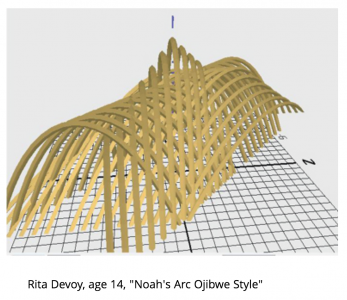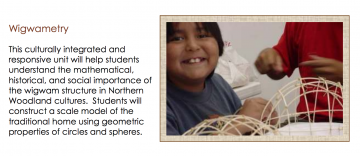Math is Cultural! Prior to colonialism Indigenous cultures created many mathematical applications in which values generated by human and more-than-human beings flowed back in a reciprocal way. Our current extractive economic system has undermined those values, neglecting the mathematical and scientific heritage of Indigenous cultures, and in return have caused an environmental crisis through pollution, exploitation and social injustice. Restoring Indigenous algorithms- the mathematical way in which Indigenous people express their perspective of the world- is key to decolonizing curriculum and sustaining our life on Earth. Many cultural designs show how mathematical ideas are embedded in Indigenous traditions, graffiti art, and other surprising sources. Culturally Situated Design Tools: Teaching Math and Computing Through Culture is an incredible digital resource than can help you include “heritage algorithms” inside your classroom!
These “heritage algorithms” can help students learn mathematics and scientific principles as they digitally simulate original Indigenous artifacts, and students can even develop their own creations. Some of the Culturally Situated Design Tools available are: Anishinaabe Quilts & Arcs, Pre-Columbian Pyramids, Cornrow Braids, and many more… All tools are intended to improve education, justice, and equality through a new perspective of STEM educational methods. Culturally Situated Design Tools is a digital resource developed by Ron Eglash, an Ethno-mathematician who studies the way math and cultures intersect. His research has shown that many aspects of African design in architecture, art, even hair braiding are based on mathematical patterns. To learn more watch below Ron Eglash’s TED Talk, The fractals at the heart of African designs.

Culturally Situated Design Tools begin with a selection of heritage arts that are both connected to underrepresented communities and that have some inherent math and scientific concept embedded in them. After speaking with Elders and community representatives to ensure that the design tools considered a respectful use of Indigenous knowledges, the projects were developed with the help of Indigenous artisans. Making sure to tell the story from their point of view. Not imposing knowledge from the outside buy rather translating Indigenous knowledges into digital instruments situated in a cultural context. Each design tool starts the lesson with a cultural background story in order for students to understand the full context. For example, a beautiful mathematical Indigenous lesson that can be used in any geometry unit K-12 is Wigwametry developed by RunningHorse Livingston & Joni Theobald.
For many cultures, the word mathematics is a verb, something they do and learn as an intrinsic part of their everyday life. Mathematics can be so much more than a story problem or an exercise in a worksheet with little or no context. We can integrate math concepts into any type of cultural activity from around the world. The lack of diversity in STEM is a major concern in our modern era and its biased perspective will continue to create industrial pollution, labour exploitation and the weaponization of everything from drones to social media. The addition of Indigenous knowledges in STEM should be to create a more just and sustainable world. Culturally Situated Design Tools use a generative justice framework as a foundation for the much-needed diversity in mathematics and science. Hence, underrepresented students are more attracted to educational content, and empowered by multicultural instructions. We can all teach mathematics in a culturally revitalizing way as it always should have been.
